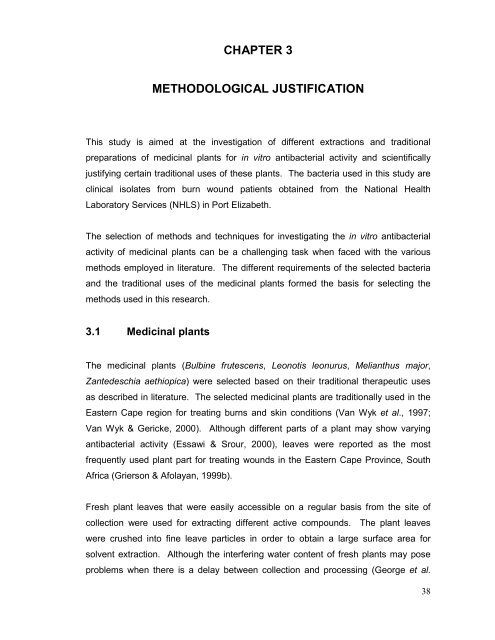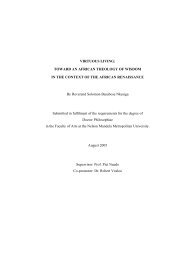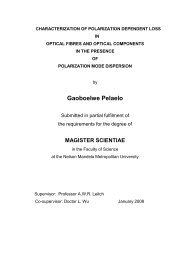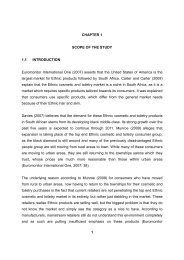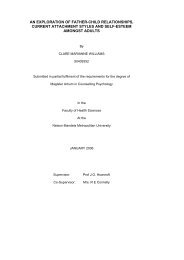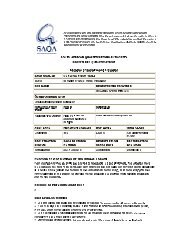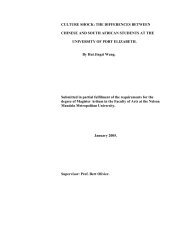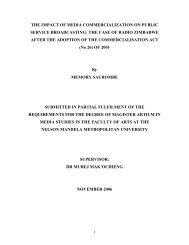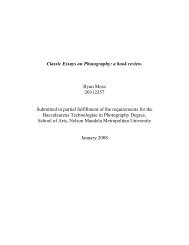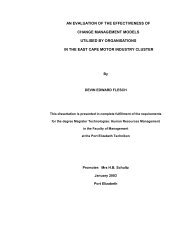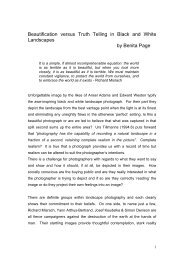an investigation into the antibacterial activities of medicinal plants ...
an investigation into the antibacterial activities of medicinal plants ...
an investigation into the antibacterial activities of medicinal plants ...
Create successful ePaper yourself
Turn your PDF publications into a flip-book with our unique Google optimized e-Paper software.
CHAPTER 3<br />
METHODOLOGICAL JUSTIFICATION<br />
This study is aimed at <strong>the</strong> <strong>investigation</strong> <strong>of</strong> different extractions <strong>an</strong>d traditional<br />
preparations <strong>of</strong> <strong>medicinal</strong> pl<strong>an</strong>ts for in vitro <strong>an</strong>tibacterial activity <strong>an</strong>d scientifically<br />
justifying certain traditional uses <strong>of</strong> <strong>the</strong>se pl<strong>an</strong>ts. The bacteria used in this study are<br />
clinical isolates from burn wound patients obtained from <strong>the</strong> National Health<br />
Laboratory Services (NHLS) in Port Elizabeth.<br />
The selection <strong>of</strong> methods <strong>an</strong>d techniques for investigating <strong>the</strong> in vitro <strong>an</strong>tibacterial<br />
activity <strong>of</strong> <strong>medicinal</strong> pl<strong>an</strong>ts c<strong>an</strong> be a challenging task when faced with <strong>the</strong> various<br />
methods employed in literature. The different requirements <strong>of</strong> <strong>the</strong> selected bacteria<br />
<strong>an</strong>d <strong>the</strong> traditional uses <strong>of</strong> <strong>the</strong> <strong>medicinal</strong> pl<strong>an</strong>ts formed <strong>the</strong> basis for selecting <strong>the</strong><br />
methods used in this research.<br />
3.1 Medicinal pl<strong>an</strong>ts<br />
The <strong>medicinal</strong> pl<strong>an</strong>ts (Bulbine frutescens, Leonotis leonurus, Meli<strong>an</strong>thus major,<br />
Z<strong>an</strong>tedeschia aethiopica) were selected based on <strong>the</strong>ir traditional <strong>the</strong>rapeutic uses<br />
as described in literature. The selected <strong>medicinal</strong> pl<strong>an</strong>ts are traditionally used in <strong>the</strong><br />
Eastern Cape region for treating burns <strong>an</strong>d skin conditions (V<strong>an</strong> Wyk et al., 1997;<br />
V<strong>an</strong> Wyk & Gericke, 2000). Although different parts <strong>of</strong> a pl<strong>an</strong>t may show varying<br />
<strong>an</strong>tibacterial activity (Essawi & Srour, 2000), leaves were reported as <strong>the</strong> most<br />
frequently used pl<strong>an</strong>t part for treating wounds in <strong>the</strong> Eastern Cape Province, South<br />
Africa (Grierson & Afolay<strong>an</strong>, 1999b).<br />
Fresh pl<strong>an</strong>t leaves that were easily accessible on a regular basis from <strong>the</strong> site <strong>of</strong><br />
collection were used for extracting different active compounds. The pl<strong>an</strong>t leaves<br />
were crushed <strong>into</strong> fine leave particles in order to obtain a large surface area for<br />
solvent extraction. Although <strong>the</strong> interfering water content <strong>of</strong> fresh pl<strong>an</strong>ts may pose<br />
problems when <strong>the</strong>re is a delay between collection <strong>an</strong>d processing (George et al.<br />
38


